| HOME |
|---|
Triangulum
The Triangle

Triangulum - Celestial Atlas by Alexander Jamieson - 1822
| HOME |
|---|

Triangulum is a small constellation with its three brightest stars forming a long, narrow triangle. One of Ptolemy's original 48 constellations, it's been recognised as a triangle for millenia. Visually unremarkable, none of its stars are particularly bright or noteworthy. The constellation is known primarily as the home of the nearby M33, The Triangulum Galaxy.
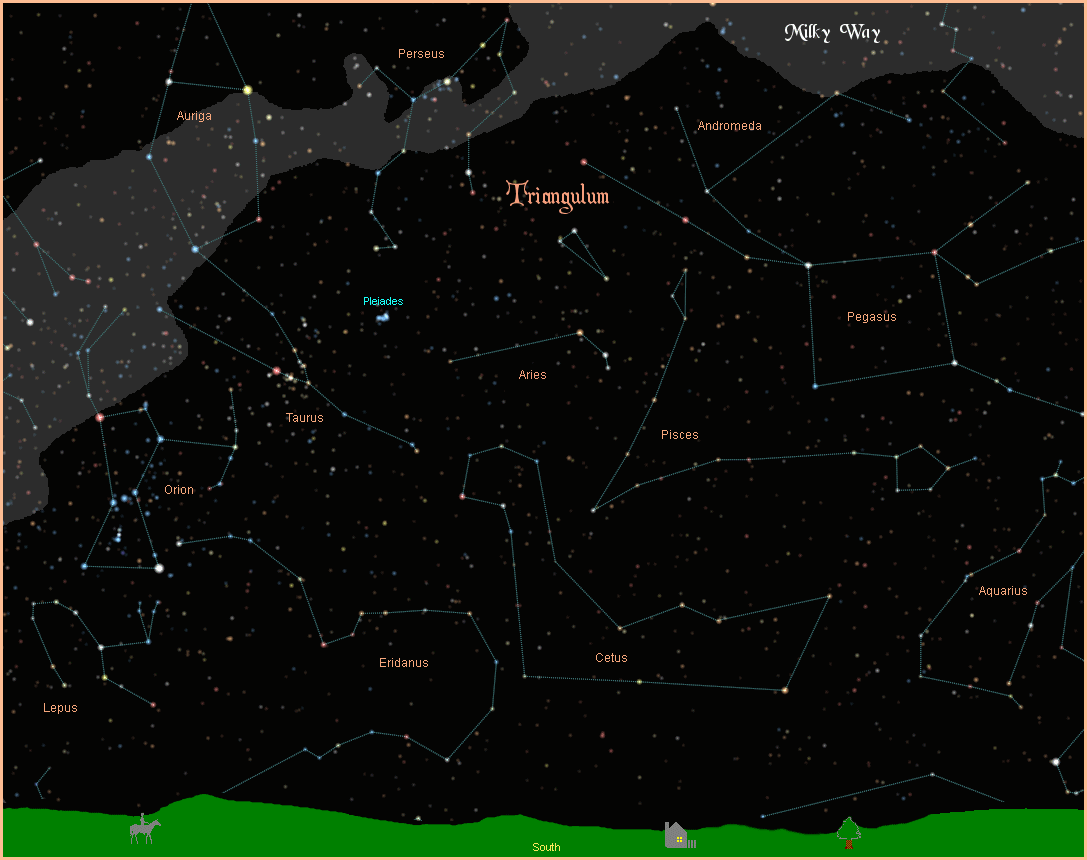
At magnitude 3.42, the star designated Alpha Trianguli is the second brightest star in the constellation, possibly given the alpha designation for being the apex of the triangle. It is the only named star, called Metallah (or Mothallah), from the Arabic for triangle. It is an F5III yellow giant, about 63 light years away. Metallah is a spectroscopic binary, with a small companion that orbits too closely to be visually resolved.
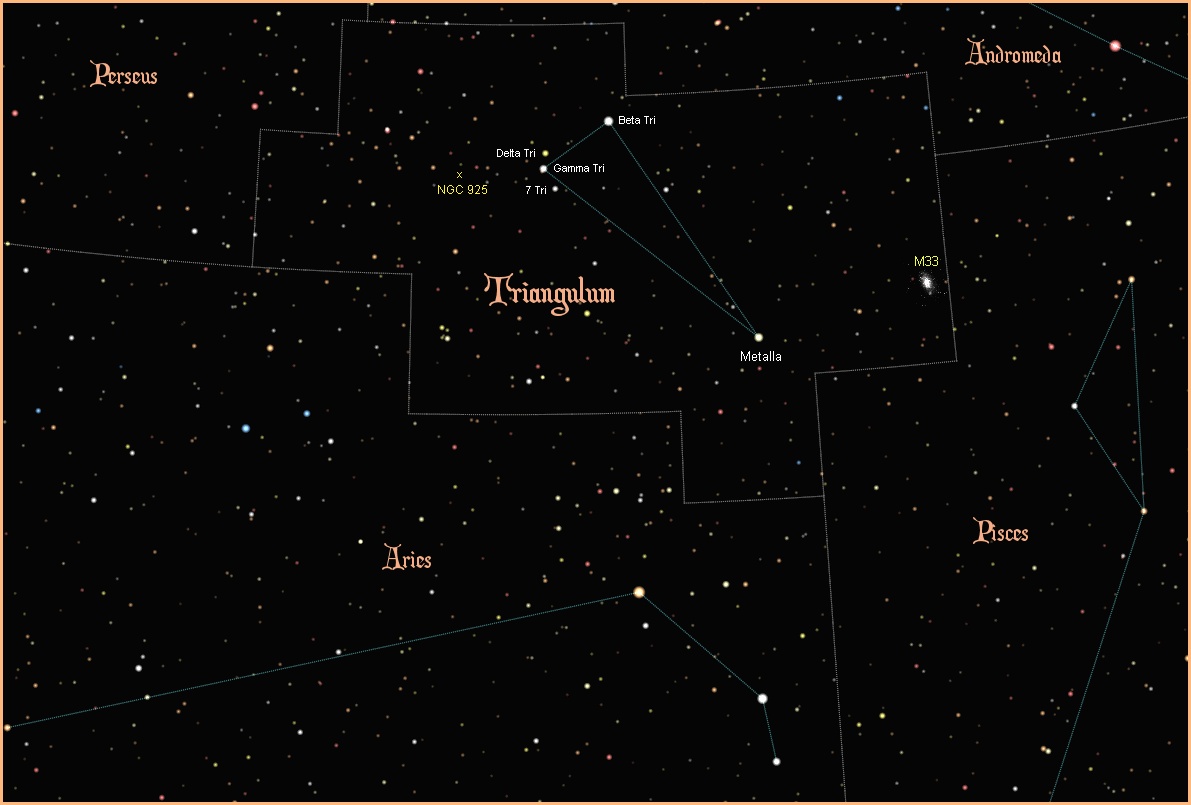
At magnitude 3.00, the brightest star in the constellation is Beta Trianguli. It is an A5III white giant, about 127 light years away. Like Metallah, it is a spectroscopic binary with a very close companion.
Finishing the triangle at magnitude 4.03 is Gamma Trianguli, an A0V blue/white main sequence star. Closely flanked by 4.84 magnitude Delta Trianguli on one side and 5.25 magnitude 7 Trianguli on the other, it forms a pleasing triplet of stars that are not true, gravitationally bound companions. Although closely grouped in our line of sight they are actually nowhere near each other. In the third dimension, Delta Tri is right next door to us at the relatively close stellar distance of 35 light years, Gamma Tri is much farther away at 112 light years, and 7 Tri is more than twice that distance, very far away at 281 light years.
There are four stars in Triangulum that have been found to support planetary systems, but they are all very far away, and well beyond naked eye visibility. The planets detected so far have all been gas giants. For more information on these and other extrasolar planets, visit NASA's New Worlds Atlas, and The Open Exoplanets Catalogue.
Triangulum does have one very important claim to fame within its boundaries, and that is the spectacular Triangulum Galaxy, also known as M33 (NGC 598). It is also sometimes known as The Pinwheel Galaxy, although that name more properly belongs to M101 in Ursa Major. At a distance of 2.6 million light years and a magnitude of 5.7, the Triangulum Galaxy is the second closest and second brightest spiral galaxy in our sky, second only to the great Andromeda Galaxy 2.5 million light years away at magnitude 3.4. On a good dark night the Triangulum Galaxy can sometimes be seen without any optical aids, surpassing the Andromeda Galaxy as the most distant object visible to the naked eye. M33 is 50,000 light years in diameter, and estimated to contain about 40 billion stars.
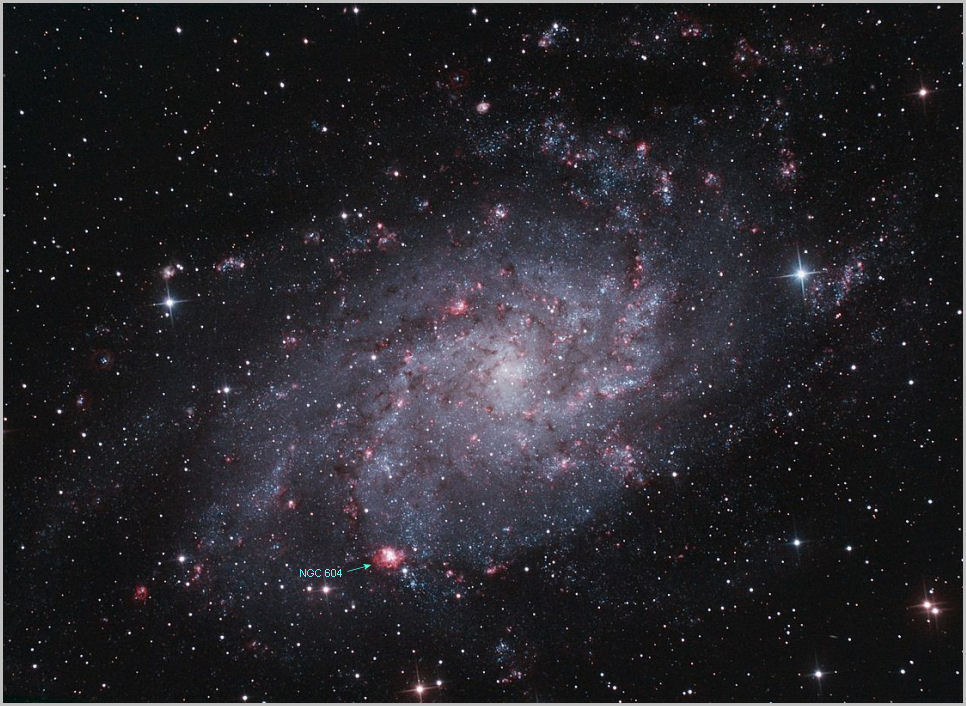
Inside the Triangulum Galaxy is the immense emission nebula NGC 604, a seething cauldron of violent star formation 1,500 light years across, 40 times larger than the Great Orion Nebula, M42. At magnitude 14.0 it is only visible in large telescopes.
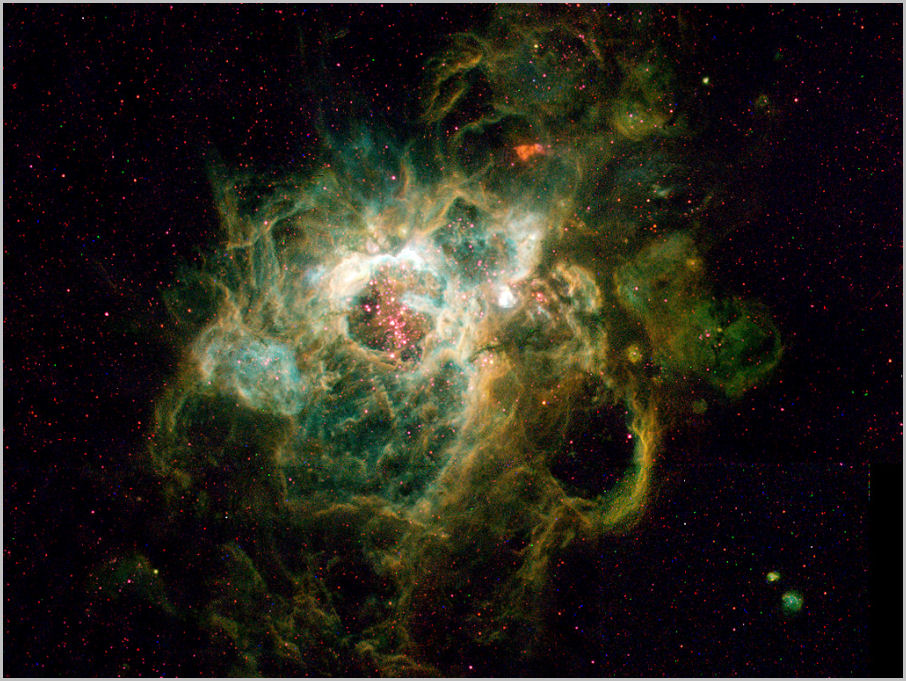
In 2010 Hubble took a close-up look deep into the centre of NGC 604, and resolved hundreds of hot infant stars being born and raised inside the vast nebula.
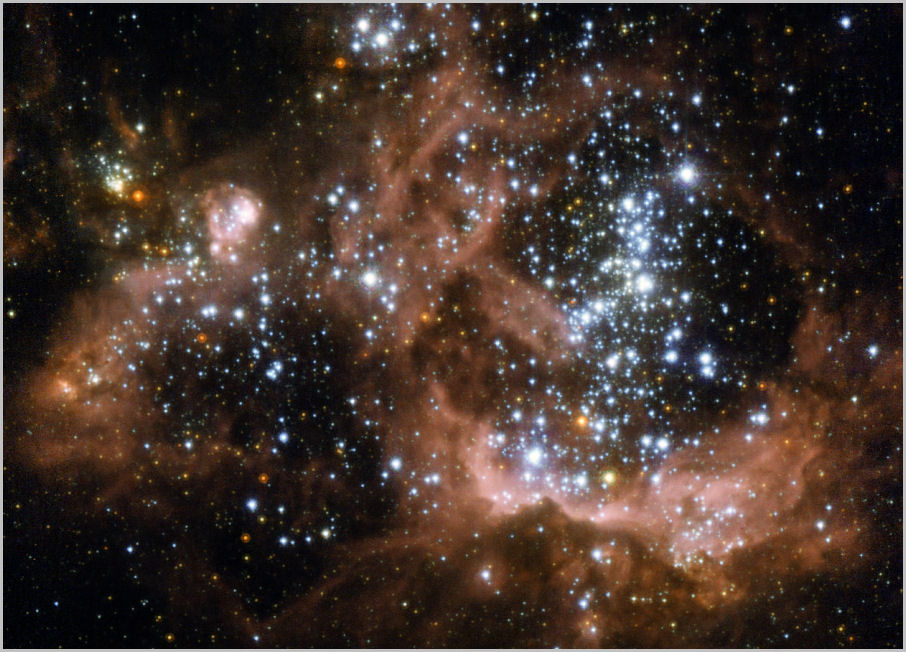
Much farther away at a distance of 30 million light years and a magnitude of 10.1 is the barred spiral galaxy NGC 925.
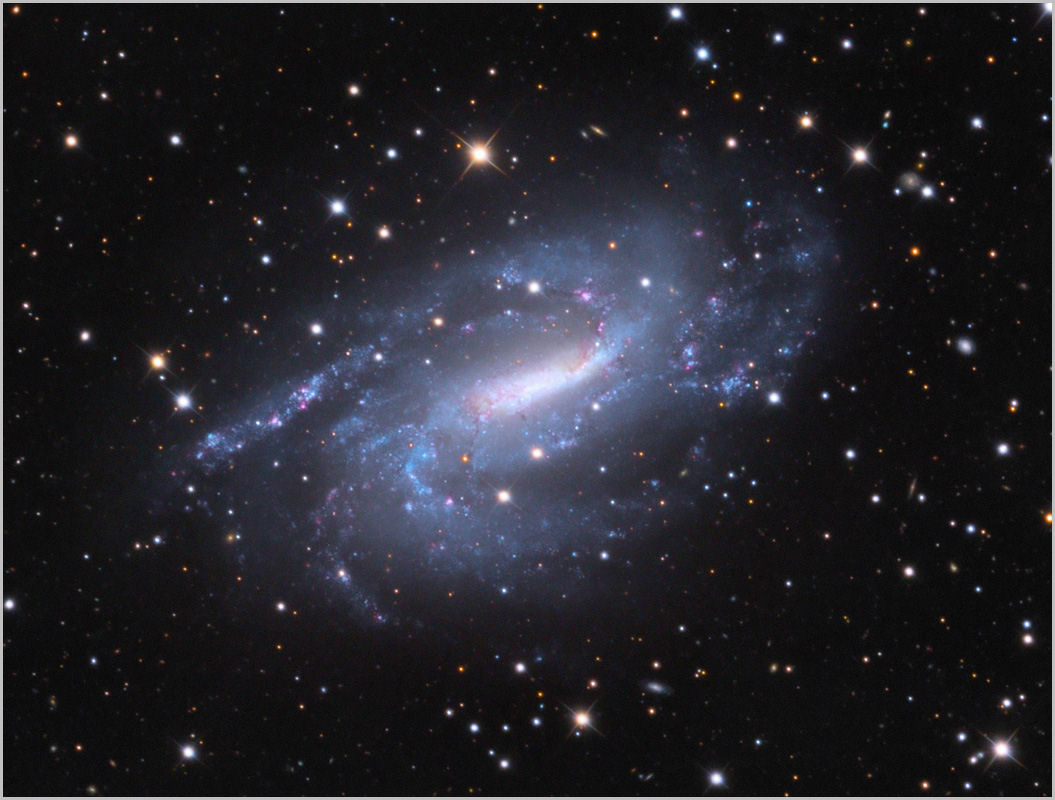
|
|
|
|
|
|